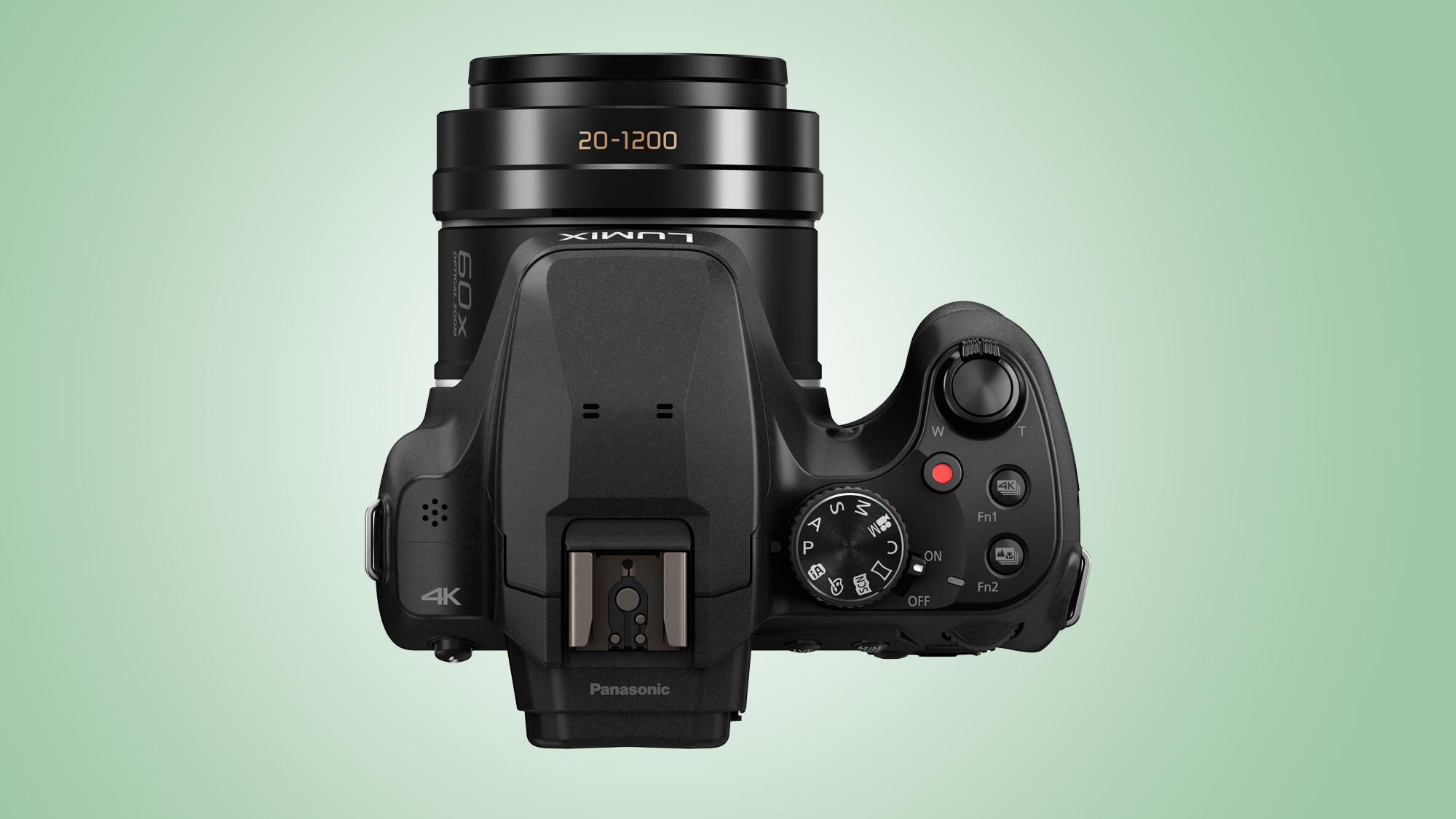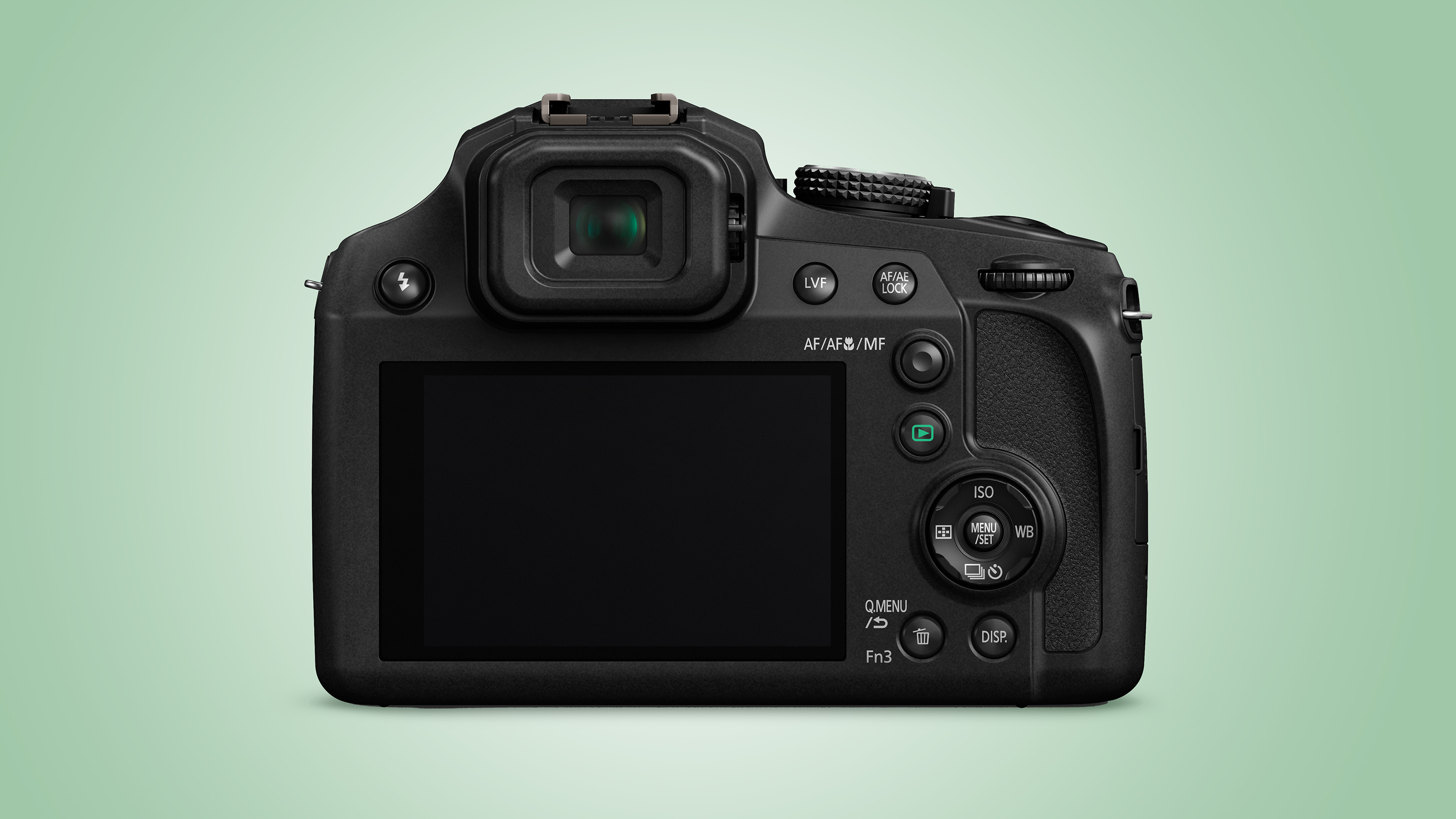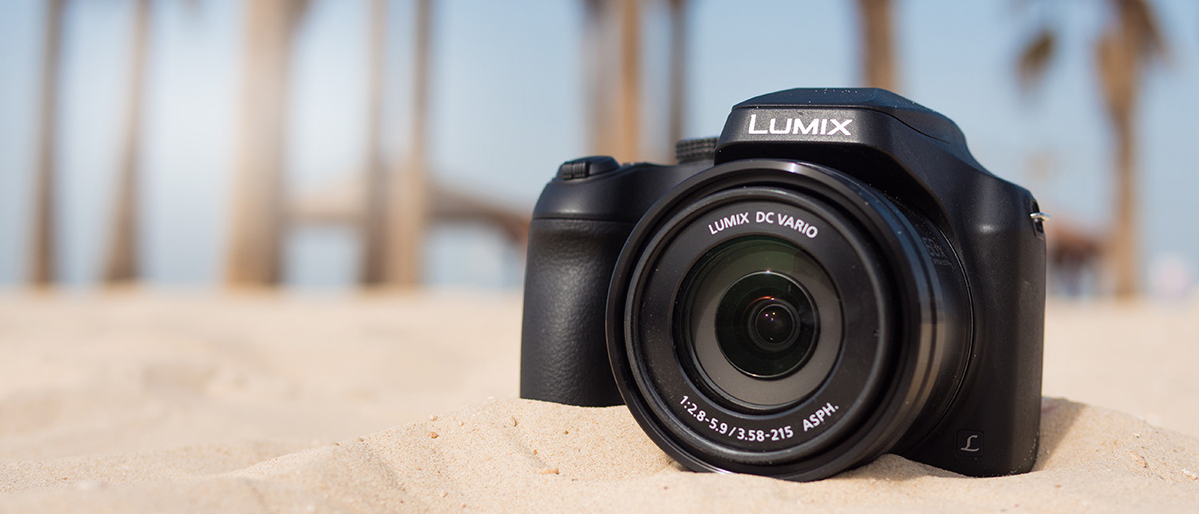Why you can trust TechRadar
Build and handling
- Manual, semi-auto and auto modes
- Poor EVF
- Weighs 616g
Considering the Panasonic Lumix FZ80 / FZ82 weighs 616g with battery and SD card, it feels surprisingly light in the hand. This is due to the well-balanced design that’s not dissimilar to that of an entry-level DSLR, and which features a comfortable grip and thumb plate on the back. In fact, a quick glance at the camera and you could easily mistake it for a DSLR.

On the top you’ll find the familiar mode dial offering direct access to the most commonly used shooting modes, including manual, aperture priority, shutter priority, program, Intelligent Auto, Creative Video, C (Custom), Panorama Shot, Scene Guide, Creative Control and video.
Buttons in general have been kept to a minimum, and are all clearly labelled, so finding your way around as your skills grow shouldn’t be a problem. Menu-based shooting modes include Multi Exposure, Time Lapse Shot and Stop Motion Animation.
The menu system is similarly well laid out and easy to navigate, although once the desired file format and quality are set you could quite easily stay out of the menu for some time, taking advantage of the various direct access buttons on the camera body to access the most commonly used settings.

Moving round to the back of the Panasonic FZ80 / FZ82, you’ll find a clear and crisp, fixed 3-inch 1,040,000-dot LCD touchscreen that can be used to tap-focus and change settings, as well as to compose shots and review images.
You can also use the LCD to select the focus point when composing with the 1,170,000-dot electronic viewfinder (EVF), which is a nice touch – just watch out for your nose touching the screen and changing the focus point.

The LCD screen is great, but when shooting with the lens zoomed in it can be more effective to use the EVF. That said, while the image in the viewfinder is clear, it's let down by a low magnification, so it’s small and feels like it’s at the end of a short tunnel – this makes it difficult to read the camera settings that are visible, and moving back to the LCD for this can prove more comfortable on the eye.
Another point worth mentioning is that the EVF lacks the punchy colours and contrast of the LCD. On the plus side the EVF eyepiece sits out from the body, which avoids the need to squash your face up against the back of the camera. There isn't an eye sensor though, so you'll have to manually switch between the EVF and LCD.
Autofocus
- 1cm minimum focus distance
- Fast AF
- Full sensor point selection
The FZ80 / FZ82 delivers lightning-fast AF that locks onto subjects almost instantly as you depress the shutter button halfway. And when shooting with the lens set to 20mm you can take advantage of a minimum focus distance of 1cm when AF Macro is set, although as you extend the zoom the minimum focus distance increases, to 1.5m at 1200mm.

It would be great to be able to focus at a shorter distance with longer focal lengths, but this is a standard behavior of telephoto lenses, so it’s not out of the ordinary.
Focus modes include Face/Eye Detection; Tracking, which will identify and track moving subjects in the frame, 49-area auto selection; Custom Multi, which allows you to set an AF point pattern in the desired area and save custom settings; 1-area single point; and Pinpoint, which shows a zoomed area around the pinpoint area selected.
There’s also a Manual focus mode, which allows you to autofocus and then locks the focus at that setting. It’s not manual focus as you know it – you don’t turn a focus ring – but it will be handy for situations where focus needs to remain locked on a specific part of the frame.
As on most Panasonic Lumix cameras you can select a single AF point by simply touching the LCD screen when in 1-area mode, and this can also be done while using the EVF; using the thumb and forefinger to pinch allows you can change the size of the single AF point. The overall simplicity of operation here reflects the overall ease of use that’s evident across the camera’s overall design.
Current page: Build, handling and AF
Prev Page Introduction and key features Next Page Performance and image qualityJames Abbott is a professional photographer and freelance photography journalist. He contributes articles about photography, cameras and drones to a wide range of magazines and websites where he applies a wealth of experience to testing the latest photographic tech. James is also the author of ‘The Digital Darkroom: The Definitive Guide to Photo Editing’.

